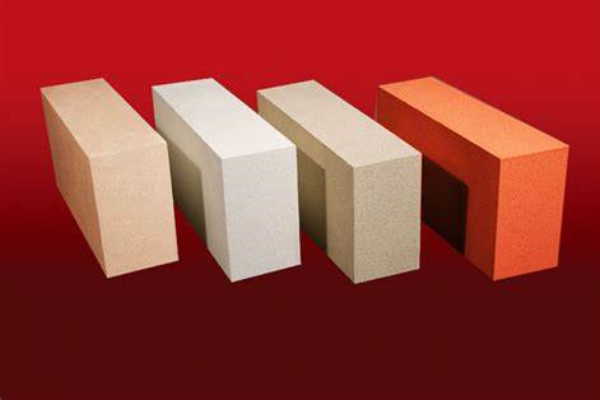
Refractory heat insulation brick heat transfer through the solid phase transfer and transfer through the gas in two parts.
Refractory Thermal Insulation Brick can make the kiln operation more energy efficient and green, and play a role in saving fuel when reducing heat loss.
Refractory thermal insulation bricks are widely used in a variety of high-temperature applications, including powder metallurgy belt sintering machine industry, heat treatment furnaces, aluminum electrolysis tanks, keramikk, ildfaste materialer, building materials firing kilns, a variety of petrochemical industry electric furnaces and so on.
Akkurat nå, there are siliceous lightweight insulation materials, clay, høy alumina, and corundum, applicable to a variety of industrial furnaces, according to the different requirements of the working environment and the level of the furnace temperature, the selection of different types and thicknesses of the material, not only for high-temperature furnace insulation but also for the lining of the direct contact with the flame.
Refractory heat insulation brick heat transfer through the solid phase transfer and transfer through the gas in two parts. At low temperatures, mainly solid-phase heat transfer. At high temperatures, gas-phase heat transfer is important.
To reduce the heat transfer in the solid phase, it is necessary to select a solid phase with low thermal conductivity, and it is also necessary to reduce the contact area between solid particles.
For eksempel, the more complex the crystal structure, the more phonons are scattered and the lower the thermal conductivity. Polycrystals have poorer structural integrity and regularity, plus the effects of grain boundary impurities and distortions, and have lower thermal conductivity than single crystals. Again, the pores can scatter phonons. Refractory brick factories said that: in general, the porosity increases, which can reduce the thermal conductivity. Også, the use of spherical microparticles, so that heat can only be transmitted through the tiny contact area between the particles, can greatly reduce the thermal conductivity of the solid.
(1) hollow sphere bonding molding method: the method is mainly through the binder will be pre-prepared porous lightweight aggregate bonding molding, and then by drying and firing at the appropriate temperature to obtain products. The products produced by this method are inexpensive and simple, but they are prone to delamination in the molding process, and because of the difference in thermal expansion between the binder and the aggregate, they are prone to cracking or even collapse in the process of repeated heating and cooling.
(2) pre-buried filler burned-out method: this method of process method is simple, low cost, and is the main production method of porous lightweight heat preservation and thermal insulation materials. Commonly used combustible additives are sawdust, cork powder, charcoal, anthracite ash, coke powder, rice husk, polystyrene particles, naphthalene particles, og så videre.
(3) chemical reaction foaming method: this method is the use of pore-forming agent powder mixed into the slurry and the liquid phase components to produce a chemical reaction to release gas, so that the slurry becomes a porous flow slurry, by pouring molding, tørking, and obtain the porous billet, and then high-temperature calcination that is made. This method is suitable for the manufacture of pure oxide thermal insulation refractory products, the porosity of up to 55% -75%.
(4) Pre-embedded volatile matter repellent method: this method is the volatile matter mixed into the slurry and then under certain conditions to make the volatile matter sublimation to form air holes.
(5) foam pre-mixed casting molding method: this method is added to the slurry foam (obtained by protein, rosin soap, saponin resin, and other physical foaming agents foaming) mixed to get the foam slurry, and then casting molding, after drying and firing to obtain porous lightweight heat-insulating refractory materials.
Akkurat nå, the actual production of commonly used methods is the pre-buried filler burned-out method and foam premixed casting molding method. The strength and thermal conductivity of lightweight heat-insulating bricks produced with different production methods differ greatly.
The refractory thermal insulation brick content is introduced here, I hope to help you, if there are other questions, welcome to call to consult. PER Refractory as a professional refractory manufacturer, with good quality, and low prices. PER refractory using automated production processes and equipment, the introduction of advanced management and quality inspection system, to ensure that each batch of refractory can meet the user’s requirements, and that product quality is worthy of your trust. The quality of products is worthy of your trust.
Siden oktober, aluminaprisene har fortsatt å stige, and China's largest bauxite importer - a…
Først, Høy alumina murstein: The Leader In High Temperature Refractories As a leader in high-temperature…
The application of refractory bricks in the kiln immediately endangers the operation rate of the…
Analysis Of The Causes Of Common Quality Problems In Tunnel Kiln Construction And Measures To…
Corundum quality refractory castables are made from corundum to the new jade refractory insulation material…
Analyse av ildfaste aluminium-silisiumråmaterialer Prof. Li Yong of the University of Science and…